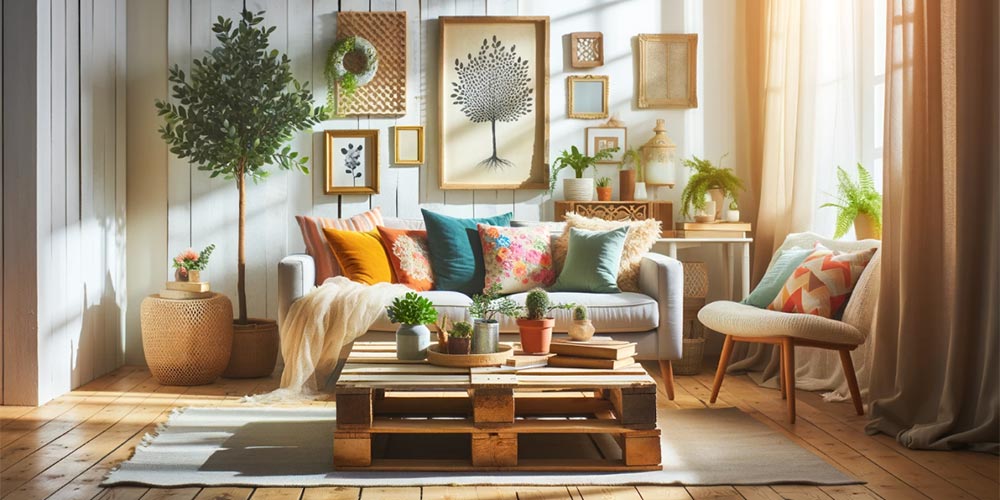The Ultimate Guide to Sustainable Home Decor for Eco-Conscious Living
The Ultimate Guide to Sustainable Home Decor for Eco-Conscious Living
Blog Article
Master the Art of Layering Textures in Home Decor for a Cozy Ambience
The capacity to efficiently layer appearances within home decoration is a nuanced skill that significantly adds to a warm and welcoming environment. By recognizing the interaction between various products and their tactile qualities, one can develop an area that not only looks cosmetically pleasing however additionally really feels welcoming. The selection of corresponding textures, from soft materials to natural environments, is critical in attaining this equilibrium - Home decor. Nonetheless, the difficulty hinges on understanding the techniques that raise a room from simply practical to incredibly cozy. Discovering these approaches exposes how thoughtful layering can change your living setting right into a real refuge.
:max_bytes(150000):strip_icc()/living-room-decor-ideas-5442837-hero-8b6e540e13f9457a84fe9f9e26ea2e5c.jpg)
Understanding Texture Basics
When it comes to home design, comprehending the basics of texture is important for creating a harmonious and welcoming room. Structure refers to the responsive top quality of surface areas and can substantially influence the overall aesthetic and feeling of a space.

Picking the Right Materials
Selecting the appropriate materials is essential in achieving a well-layered appearance in home decoration. The option of materials not just affects the overall visual however also impacts the convenience and functionality of the space. When thinking about structures, focus on all-natural fibers such as cotton, silk, wool, and bed linen, which offer heat and a tactile quality that artificial materials commonly lack.
For upholstery, choose sturdy textiles that can endure wear while keeping their appearance. Velour and chenille can include luxurious deepness, while canvas and jeans provide a more casual feeling. Incorporating timber, rock, or steel can enhance the tactile comparison, providing a based, organic component to your style.
In addition, think about the weight and drape of materials when choosing drapes or throws. Much heavier products can create a comfortable, wrapping up ambience, while lighter choices can keep an airy feel. Accessories like cushions and rugs can present different structures and patterns, enriching the total layered impact. Inevitably, the appropriate material selections will balance with your layout vision, developing a space that feels inviting and natural. Carefully curating these aspects will significantly add to the setting of your home.
Layering Methods for Depth
Effective layering methods are essential for producing deepness in home decor, transforming a flat room right into one that feels abundant and inviting. To achieve this, begin by including different textures that comparison yet match each various other. Compare smooth surface areas like glass or steel with softer products such as woollen or linen. This produces aesthetic passion and tactile variety.
Following, take into consideration the use of carpets. Layering rugs can successfully specify locations within a room, adding heat and dimension. A bigger, neutral rug can work as a base, while a smaller sized, formed carpet adds prime focus. In a similar way, tactically placing toss pillows with differing textures and dimensions on sofas or beds can improve deepness and convenience.
Furthermore, incorporate building elements such as shelves or mounted artwork to create vertical layers. This not only attracts the eye up but likewise offers chances to introduce added appearances via decorative things presented on the shelves.
Shade Coordination and Appearance
In the world of home decoration, attaining harmony in between shade and texture is important for developing a natural and inviting environment. When thoughtfully collaborated, color and texture can boost the visual appeal of a room, creating deepness and passion.

Following, concentrate on appearance. Soft fabrics like velvet or linen compared with tough products such as timber or metal develop a dynamic interaction. A plush velour sofa coupled with a smooth, metallic coffee table introduces a tactile Website comparison that invites touch and exploration.
Furthermore, layering different textures-- like a woven rug under a smooth table-- can even more enrich the space. Bear in mind to preserve a natural appearance by restricting the variety of shades and appearances, which aids prevent aesthetic mayhem. By understanding the art of color control and structure, you can develop a setting that really feels both unified and inviting.
Seasonal Texture Transitions
As the periods adjustment, so as well need to the textures within your home to show the progressing atmosphere and state of mind. Transitioning your decor from one season to one more can develop a feeling of quality and comfort, enhancing your home's general allure.
In spring and summer, accept lighter fabrics such as bed linen and cotton. These products promote a breezy feeling and can be improved with vibrant patterns or subtle appearances like embroidered information. Include airy throw pillows and lightweight coverings to preserve a sense of relaxation.
As fall methods, take into consideration presenting heat via richer appearances. Woollen, velour, and much heavier knits can provide convenience and coziness. Choose earthy tones and split textiles like beefy weaved tosses or sumptuous velours to produce an inviting atmosphere.
Wintertime requires a much more indulgent approach. Incorporate split structures with artificial fur, thick woollen, and plush products - Home decor. These components not only add depth to your decor but also welcome warmth during chillier months
Verdict
In conclusion, grasping the art of layering appearances in home have a peek here decoration considerably contributes to creating a comfortable ambience. Additionally, adapting appearances seasonally boosts the total aesthetic and comfort of the home.
The capacity to effectively layer textures within home decoration is a nuanced ability that considerably contributes to a warm and welcoming environment.When it comes to home style, comprehending the principles of structure is essential for developing an unified and inviting space. By understanding the fundamentals of structure, you lay the foundation for even more sophisticated layering strategies, leading to a well-curated and welcoming home decor scheme.
Selecting the appropriate materials is critical in attaining a well-layered appearance in home design.In verdict, mastering the art of layering appearances in home design considerably contributes to creating a cozy environment.
Report this page